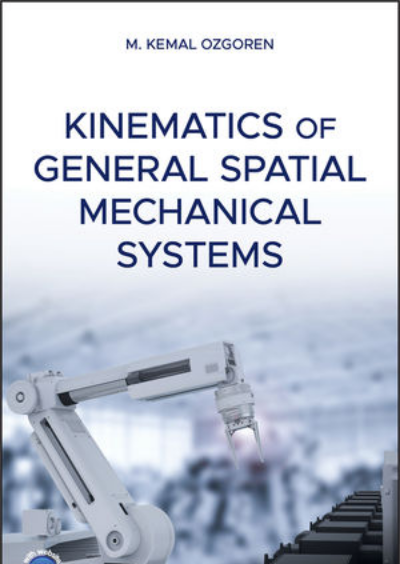
Our emeritus faculty member Prof. Dr. Kemal Özgören wrote a book titled “Kinematics of General Spatial Mechanical Systems”, published by the prestigious publisher Wiley. The book, which is an outcome of years of work, is aiming to be an effective and proficient guide to the kinematic description and analysis of the spatial mechanical systems such as serial manipulators, parallel manipulators, and spatial mechanisms.
We congratulate Prof. Kemal Özgören in his great contribution to the field of kinematic systems and wish him future success in his studies. Detailed information about the book is provided below.
About “Kinematics of General Spatial Mechanical Systems”
This book is written to address the academicians, students, engineers, and any other people working in the area of robotics and spatial mechanisms.
This book can be considered to be an effective and proficient guide to the kinematic description and analysis of the spatial mechanical systems such as serial manipulators, parallel manipulators, and spatial mechanisms. Its content basically consists of the following items:
- The mathematics of spatial kinematics with the necessary theorems, formulas, and methods.
- The kinematic description of the links and joints including the rolling contact joints.
- Writing the kinematic chain and loop equations for the systems to be analyzed.
- Solving the position, velocity, and acceleration equations for the unknowns.
- Obtaining the solutions in analytical (if possible) or else in semi-analytical ways.
- Identification and analysis of the multiplicities and singularities.
The mechanical systems considered in this book range from rather simple ones such as spatial mechanisms with single degree of freedom to more complicated ones such as serial manipulators including those with redundancies and deficiencies, parallel manipulators, and non-holonomic spatial cam mechanisms that involve rolling without slipping motions.
This book introduces a convenient notation and presents an effective symbolic manipulation method that makes it possible to obtain neat and transparent expressions that describe the systems showing all the kinematic details. Such expressions readily lead to analytical or semi-analytical solutions. They also facilitate the identification and analysis of the multiplicities and singularities.
This book is also accompanied by a website, which will keep supplying additional examples and exercise problems.
